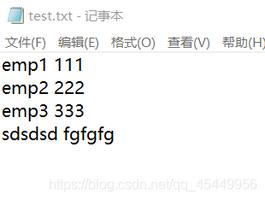Python创建文件和追加文件内容实例
一、用Python创建一个新文件,内容是从0到9的整数, 每个数字占一行:
>>>f=open('f.txt','w') # r只读,w可写,a追加
>>>for i in range(0,10):f.write(str(i)+'\n')
. . .
>>> f.close()
二、文件内容追加,从0到9的10个随机整数:
#python
>>>import random
>>>f=open('f.txt','a')
>>>for i in range(0,10):f.write(str(random.randint(0,9)))
. . .
>>>f.write('\n')
>>>f.close()
三、文件内容追加,从0到9的随机整数, 10个数字一行,共10行:
#python
>>> import random
>>> f=open('f.txt','a')
>>> for i in range(0,10):
. . . for i in range(0,10):f.write(str(random.randint(0,9)))
. . . f.write('\n')
. . .
>>> f.close()
四、把标准输出定向到文件:
#python
>>> import sys
>>> sys.stdout = open("stdout.txt", "w")
例子:
查看22端口情况,并将结果写入a.txt
#!/usr/bin/python
#coding=utf-8
import os
import time
import sys
f=open('a.txt','a')
f.write(os.popen('netstat -nltp | grep 22').read())
f.close()
以上是 Python创建文件和追加文件内容实例 的全部内容, 来源链接: utcz.com/z/321126.html








